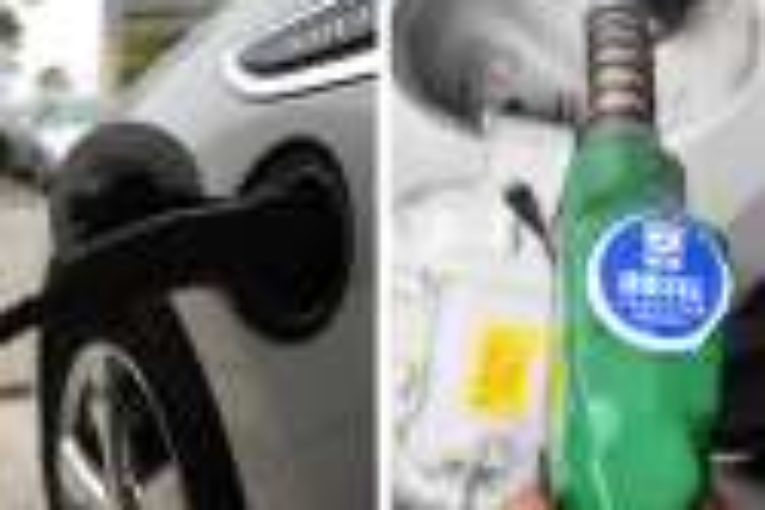
Last week’s announcement by Volvo that every car, “it launches from 2019 will have an electric motor,” jolted oil investors.
Then France amped up the newswire by switching on a ban: No more combustion car sales by 2040. To cap off a trilogy of electric vehicle (EV) proclamations, Elon Musk lit up the twitter feed with a photo of Tesla Motor’s first Model 3 production car.
Oil companies and investors should take note. These announcements are impacting the industry and will increasingly do so. But it’s not because electric cords are going to replace pump hoses anytime soon.
The clutch is completely disengaged between consumer trends and conjectures about the imminent demise of oil
The demand for oil is as robust as it’s ever been, thanks to barrels that are priced 60 per cent lower than they were three years ago; the linkage of petroleum to the world economy is actually strengthening not weakening.
But it doesn’t matter. EV mania is affecting the psychology of investors who finance oil assets, services and infrastructure. Fog lights of reason are finding it increasingly difficult to see the future of oil past 2020, because a cloud of uncertainty is thickening around long-term demand.
The result of all this next-decade confusion is that less money is going to be flowing into the oil business.
Increasingly, investors will expect a premium return for long-term projects and their money will discriminate with higher tolerance. It’s all Darwinian; the natural selection imposed by investors will seek visionary management, quality assets, fast payback, profitability at lower cost, and innovative new processes to facilitate operating at lower prices. It’s already happening and the selection criteria are likely to tighten over the next few years.
The EV revolution is no longer a Tesla curiosity. By 2020 most automakers will be parading their offerings of pure electric or hybrid models. Some will even follow Volvo’s bold move to divorce pistons in favor of rotating magnets. And it’s probable that more western countries will follow France’s ban. Each new announcement will bring more fantastic predictions about the imminent demise of the oil industry, increasing the uncertainty about how wheels are going to turn.
Even now, the mainstream narrative seems convinced that the end of oil is nigh. More and more armchair analysts ask me rhetorically, “Looks like the petroleum business is finished, eh?”
“Really?” I say with an understanding nod. But then my instinct for real-time market research kicks in. I volley a return question, “Have you bought an electric car or hybrid?”
The answer is predictably, “No,” even though hybrids have been around for almost 20 years and mainstream EVs from Nissan, BMW and Tesla have been around since 2010.
I bought a Tesla six months ago and have been driving it routinely since. I love it. Silent, smooth and efficient, I’m a believer that the electric mode of transportation is a no-brainer for city driving. But that’s just me, a habitual technology adopter.
Broad sales momentum for alternative vehicles is still tepid to-date. There was a linear ramp-up in the US market for battery electric vehicles (BEVs) between 2013 and mid-2014 when oil prices were over $100/B. But sales over the past three years have struggled to gain convincing momentum.
Plug-in hybrids (PHEVs) are starting to trend up, but volumes are small.
China is three times the auto market of the U.S. It’s demonstrating a greater propensity to adopt EVs, due to demographics, exhaust pollution and government subsidies.
But even there the monthly sales are still choppy.
An exponential ramp in global EV sales is needed to be persuasive. Undoubtedly, the trend will tick up again after we see a greater diversity of mainstream models like the Tesla Model 3 and whatever companies like Volvo, Audi, BYD and many other automakers come up with. But fast adoption is not a given. Cheap oil prices and the utility of the internal combustion engine have long been a strong tag team against assaults on their market share.
So, we are living in an energy world of contradictions. The clutch is completely disengaged between the consumer trends we see today (growing use of cheap oil and sparse EV penetration), and conjectures about tomorrow (the imminent demise of oil).
So what’s going to happen over the next few years? Here are two possible outcomes as a result of greater EV sales and headline momentum:
a) A tightening of capital will clean out oil’s inefficient producers. The progressive wing of the industry, mostly located in North America, will innovate even more aggressively to lower their costs. Technology leaders within the business will do very well and be battle hardened to handle any potential demand moderation in the 2020s. Oil prices will stay low with ample supply, making the consumer decision to switch to EVs more difficult; or,
b) Shrinking capital investment into the industry will result in oil supply constraints. Declining production will drive the price of oil higher again, after bloated inventories clear in the next couple of years. The advent of higher oil prices will be a catalyst for faster EV adoption, around the same time that more model diversity becomes available. Low-cost oil producers that are aggressively innovating today will benefit from their call option on the higher prices.
Volvo and other EV manufacturers should hope for scenario (b).
Ironically, progressive oil companies will do well under both scenarios.
Peter Tertzakian is Executive Director of the ARC Energy Research Institute in Calgary, Alberta.
You can read more of the news on source
